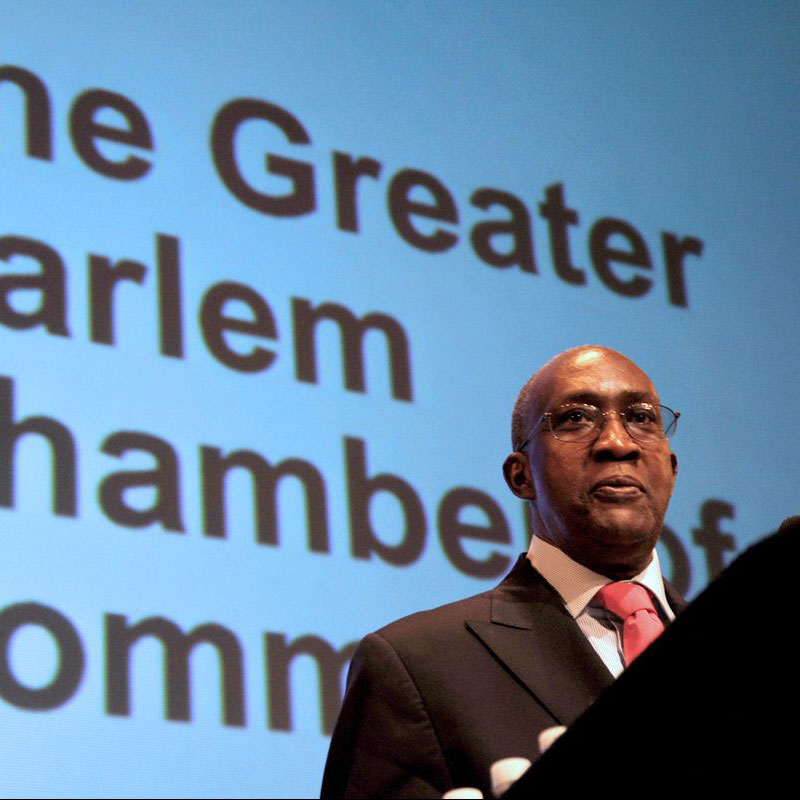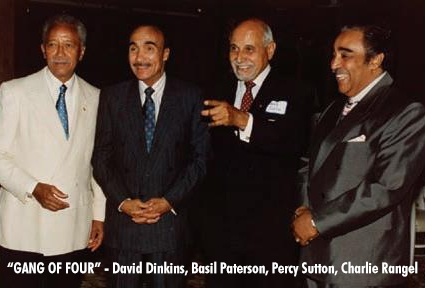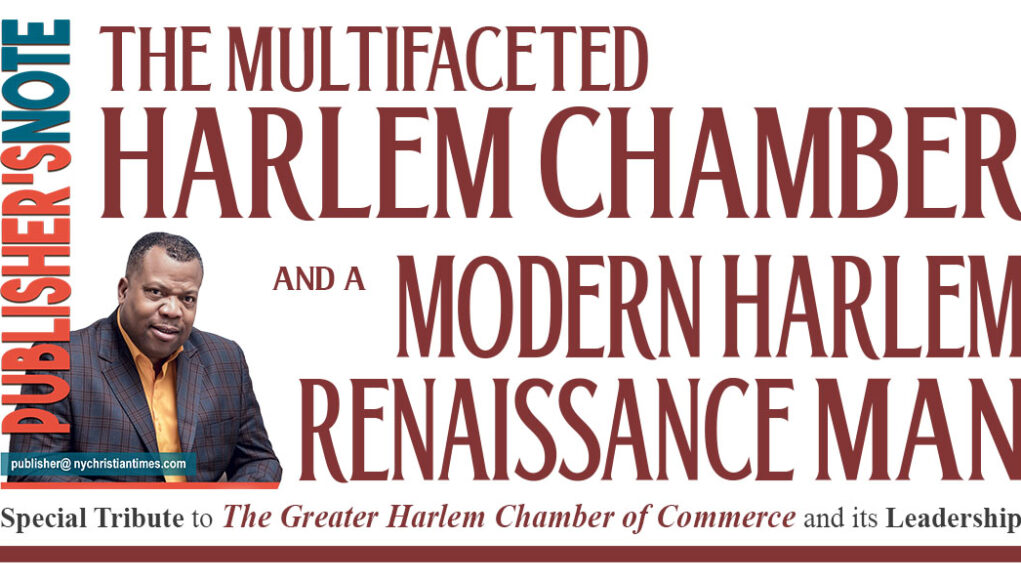Harlem is as bold as it is strong, and despite its many ethnic revolutions and the migrations of the Dutch, the British, the Italians, Jews, and Irish, it is the Africans (mainly Blacks and Latinos) who have elevated this northern Manhattan neighborhood to the global stage as the Black Mecca of the African diaspora. This revolution began with the great Black migration in the early twentieth century.
World War I had ended, and the Great Depression had begun. Black Americans have long been in a war of our own, and what was a great depression for White Americans and the countries of Europe was a way of life imposed upon African Americans by their European oppressors. Physical slavery ended but psychological oppression continued. The chains were gone, but the slave masters’ grip remained; our fore parents’ bodies were physically strong from their years of toil and hard labor, but their minds remained shackled after those hundreds of years that White slave masters and governments like America, Britain, and the Netherlands played paddle ball with their psyche. Slavery, lynching, Jim Crow, and a pervasive culture of economic suppression, social repression, and political oppression were intended to push these freed slaves and their children into psychological depression. But no – it inspired hope and fueled resilience.
After these toilsome years of free labor and thousands of uncredited inventions, these sons and daughters of Africa were denied their 40 acres and a mule and walked away empty-handed. They migrated north from the American south, and many came to Harlem. The new Negro movement gave hope and sparked a renaissance for change and transformation. A people divinely gifted, spiritually imbued, and pregnant with possibilities now shaped a new community. They had left behind the scars from the oppressors’ whips and thrust ahead to define a future that is theirs to own – and Harlem became a “state of mind.”
Harlem now gives rise to an explosive outpouring of artistic eloquence and a Black cultural revolution that blew the lid. Like a covered pot of boiling water, the power could not be contained, and Harlem rose to become the cultural, political, and spiritual capital of Black America. And the impact is deafening. America’s first megachurch – Harlem. The street talks that motivated men like Kwame Nkrumah to go back home and help free Ghana – Harlem. The rise of soul and R&B, jazz and hip hop – Harlem. The Apollo, The Savoy, The Cotton Club – Harlem. And, of course, The Greater Harlem Chamber of Commerce – Harlem.
The Greater Harlem Chamber of Commerce has been and continues to be a transforming institution for Harlem and the Harlems of the world, and I can hardly imagine a modern-day Harlem without this great anchor institution led by this modern Harlem renaissance man.
Let me back up a moment. If I could, I would like to remove myself from any involvement and knowledge of Dr. Lloyd Williams and The Greater Harlem Chamber of Commerce. In this literary moment – and this moment only – I am not a member of the Chamber’s Board of Directors! I wanna be an outsider looking in – a curiosity seeker, party crasher, and an information gatherer sneaking into Harlem and hanging out on the corner of West 136th Street and Adam Clayton Powell, Jr. Boulevard.
This “pen to paper”, “finger to keyboard” moment requires this brief self-exclusion from the Board to lift this tribute above self-praise, intra-aggrandizement, the tooting of our own horns, and any sense of a self-applauding spirit of “braggadociousness”.
And then, like an African griot, let’s tell the story fully informed by the facts of history – handed down through oral traditions, the history books, the artifacts, and pictorial images that lace the walls and halls of the historic Schomburg Library and The Chamber’s office.

For more than one hundred and twenty-five years, The Greater Harlem Chamber of Commerce – the oldest continuous business organization in Upper Manhattan – has been impacting lives and working to transform community with indelibly planted footprints over these 12 decades. And the leadership of Lloyd Williams has been defining. Lloyd has an unquenchable thirst to make a difference and to lift the Harlems of the world. He possesses a deep inner passion for people; he is sagaciously gifted with a broad body of knowledge and is a pillar of influence and a reservoir of resources.
He took the helm as president some 40 years ago, and with his childhood friend Voza Rivers, a retired NYPD detective, and a cadre of other leaders, staff, and influencers, The Greater Harlem Chamber has grown to become a multifaceted, multipurpose, multidimensional business, civic and community development organization too capacious to be narrowly defined as a business chamber. As their slogan goes, “the business of business is PEOPLE!”
The scope of The The Greater Harlem Chamber of Commerce’s impact is immeasurable: hundreds of scholarships to young people and a heavy focus and promotion of higher education; strong support for HBCUs; endless work with seniors; millions of tourists coming to Harlem; linkage and collaboration with other countries – Cuba, Martinique, South Africa, Greece, etc.; annual health conferences and wellness initiatives; technology and cybersecurity; partnerships with the NYPD and the DA’s offices; real estate development projects and property ownership and management; the endless impact of HARLEM WEEK and empowering small businesses; and yes, GHCC’s ever-engaging work and perpetual efforts to highlight the cultural heritage and richness of Harlem and the Black/African culture through the arts – theatre, fashion, music, and sports.
If there is a cause worthy of embrace, Lloyd Williams and The Greater Harlem Chamber of Commerce are there. At the start of the COVID-19 pandemic, The Chamber started the Support Harlem Now initiative that offered broad support and tens of thousands of meals. Additionally, Mr. Williams called together top stakeholders
– leaders of most key organizations and government entities – to ensure that Upper Manhattan was fully abreast of all developments.

Lloyd – who knows every block, historic site, and landmark in Harlem – is a pioneer and a trailblazer of this new Harlem Renaissance, and The Chamber and HARLEM WEEK continue to play key roles in the revitalization of Harlem. His godfather Malcolm X would be proud, and mentors and collaborators like the “Gang of Four” – Paterson, Sutton, Dinkins, and Rangel – have all played key roles in helping to shape this new renaissance.
I am having a spiritual moment, a thank you pause, and a hallelujah interlude. An old worship song comes to mind that rings true for Lloyd, The Greater Harlem Chamber board of directors, and the organization’s dedicated staff and volunteers: “May the work I’ve done, speak for me.” In their case, their work sings and shouts loudly – and it’s not a solo, trio, or quintet, but a Harlem-style mass choir releasing rhythmic sounds.
Well done, Mr. Williams and GHCC. Happy 125th anniversary!













